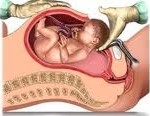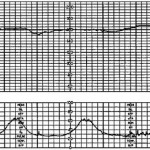THE LAW FIRM THAT HAS YOUR BACK BY GETTING OUT FRONT


Emergency Cesarean (Caesarean) Sections, how fast should these be performed?
We have successfully handled numerous birth injury and fetal death cases. See are prior experiences for various examples. We recently settled a case against a local obstetrician and a local hospital where the allegations were that the decision to perform an emergency c-section was not timely made and that an operating room was not then available. This caused the death of the child. The issues raised in that case are instructive. In this case, the clinical picture and the fetal heart tracings were strong indications of non-reassuring fetal health and well being. The delivery was not made within 30 minutes as indicated by the standards. The defense argued that there was no clear standard and the decision for proceeding to caesarean section is made on a case specific basis. The amount of the settlement was confidential.

c-section
Birth injuries and deaths resulting from NEGLIGENT FAILURE TO PERFORM TIMELY CAESAREAN SECTION (cesarean, c section) are difficult cases and require attorneys with experience and an understanding in the pertinent issues. A working knowledge of interpreting fetal monitor strips or fetal heart tracings in necessary. A good understanding and knowledge of the evolving medical literature is also very important. Pedroli and Gauthier has been handling these cases for decades.
In our recent case, the fetal heart monitor tapes showed fetal tachycardia and bradycardia for durations that made the tracings non-reassuring. The situation worsened so that other patterns emerged, including:
saltatory variability; variable decelerations associated with a non-reassuring pattern; late decelerations without preserved beat to beat variability; and persistent late decelerations with loss of beat to beat variability; non-reassuring variable decelerations associated with loss of beat to beat variability; prolonged severe bradycardia; and a sinusoidal pattern.
The hospital failed to have an available operating room and failed to open one in a timely fashion.
There is evidence of a standard of 30 minutes to perform a cesarian section upon the call of emergency. The physicians generally argue that there are not clear standards as there are often medical reasons to deviate from the norm. Problems are arising in the medical literature as it seems the literature is written with liability issues in mind. This certainly quells the progress of medical science and the development of uniform standards. With uniform standards the physician would have the burden to explain the deviation from the standard. That approach makes sense and doesn’t allow the negligent physician to avoid standardized treatment when it should be used. The parties agreed to contribute to a confidential settlement. The case settled during a recess of the physician’s deposition.
All obstetrical hospitals must be able to start stat C-sections within 30 minutes. The Guidelines for Perinatal Care state in relevant part:
… [T]he consensus has been that hospitals should have the capacity of beginning a Cesarean delivery within 30 minutes of the decision to operate.
ACOG Committee Opinion #256 states in pertinent part that “for any hospital providing obstetric care,” there should be:
Availability of anesthesia and surgical personnel to permit the start of cesarean delivery within 30 minutes of the decision to perform the procedure..
The standard of care, however, does not allow caregivers to wait 30 minutes to commence a stat C-section, if it can be done faster. Rather, caregivers are required to perform stat C-sections ” as rapidly as possible.”‘ (Of course, ” purposeful delays of any time period would be inappropriate .”‘) Thus, if the stat C-section in a given case can be performed in, e.g., eight minutes, it is inappropriate to delay commencing the surgery for the remaining 22 minutes.
The American Academy of Pediatrics (AAP) and the American College of Obstetricians and Gynecologists (ACOG), two of the main accrediting organisations in the US, recommend 30 minutes from decision‐to‐incision for emergency caesarean delivery. This standard is in the American Academy of Pediatrics, The American College of Obstetricians and Gynecologists Guidelines for perinatal care. Fifth edition. Washington, (DC): American Academy of Pediatrics [and] The American College of Obstetricians and Gynecologists, 2002. 147.
Sometimes, due to significant clinical picture and significant problems in the fetal monitor tape, the delivery must proceed even more expeditiously. See the Guidelines for Perinatal Care, 6″ Ed., p. 159, which states:
Conversely, examples of indications that may mandate more expeditious delivery [than 30 minutes] include hemorrhage from placenta previa, abruptio placentae, prolapse of the umbilical cord, and uterine rupture.
ACOG’s joint report with the American Association of Pediatrics on neonatal encephalopathy and cerebral palsy cites studies indicating brain damage occurs within 10-30 minutes depending on the nature of the umbilical cord occlusion and gestational age:
“pathologic consequences of asphyxia are gestational-age dependent, with the mid-gestation monkey fetus withstanding up to 30 minutes of cord clamping without sustaining detectable pathology, whereas only 10 minutes in the term fetus are sufficient to produce serious damage.”
“Uterine Rupture….. “Perinatal asphyxia occurred as early as 10 minutes after the onset of prolonged deceleration when the prolonged deceleration was preceded by a period of severe late decelerations ranging from 36 to 90 minutes in duration.”
Therefore, in order to have a safe delivery, fetal distress must be recognized and action taken quickly. If you have reason to believe that your child’s delivery was not handled properly, contact us for a free consultation. Pedroli & Gauthier has handled numerous cases involving permanent injuries and death which occurred during gestation, labor and delivery and postnatal. Call us for a free and confidential consultation.


Leave a Reply